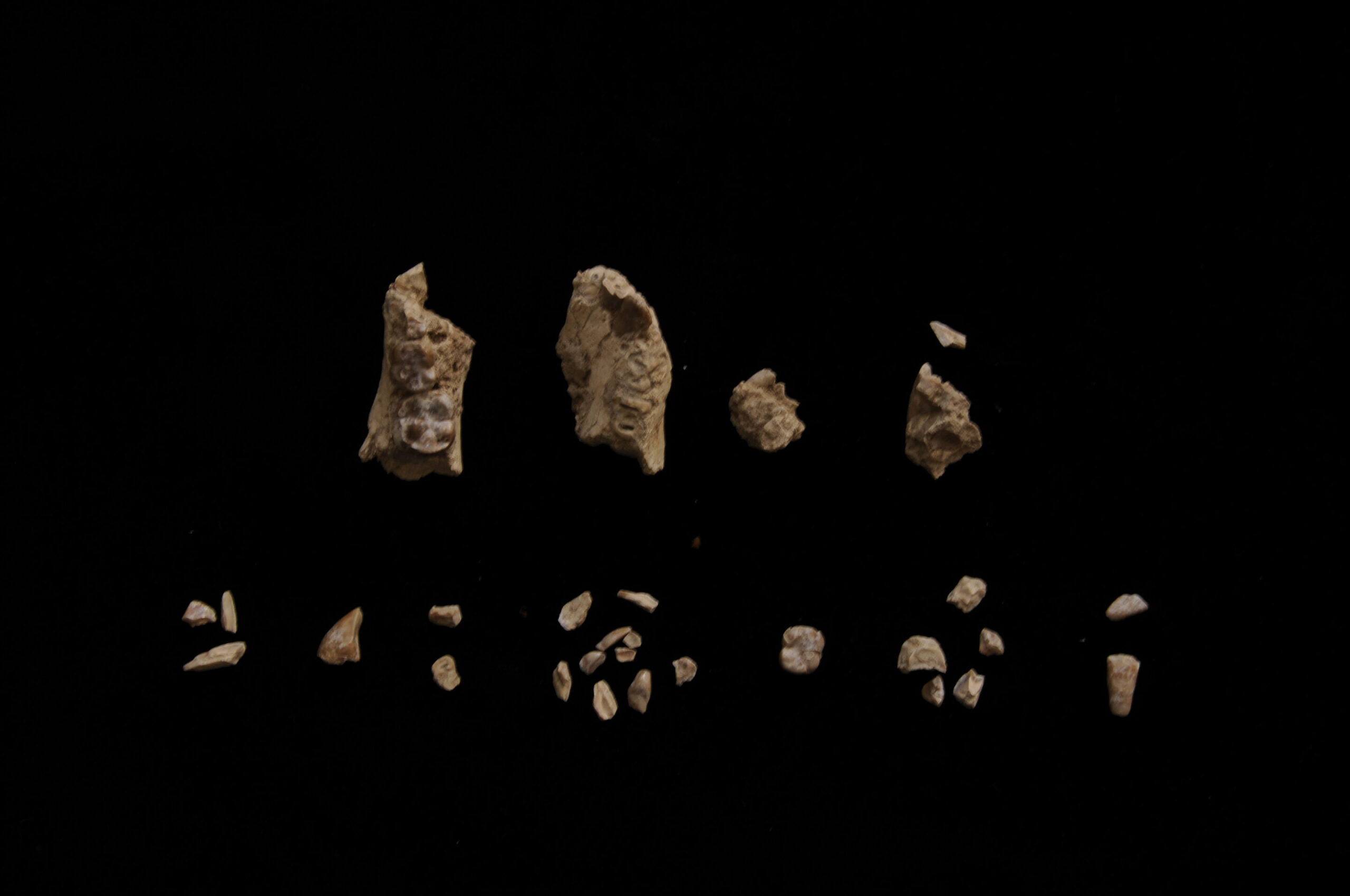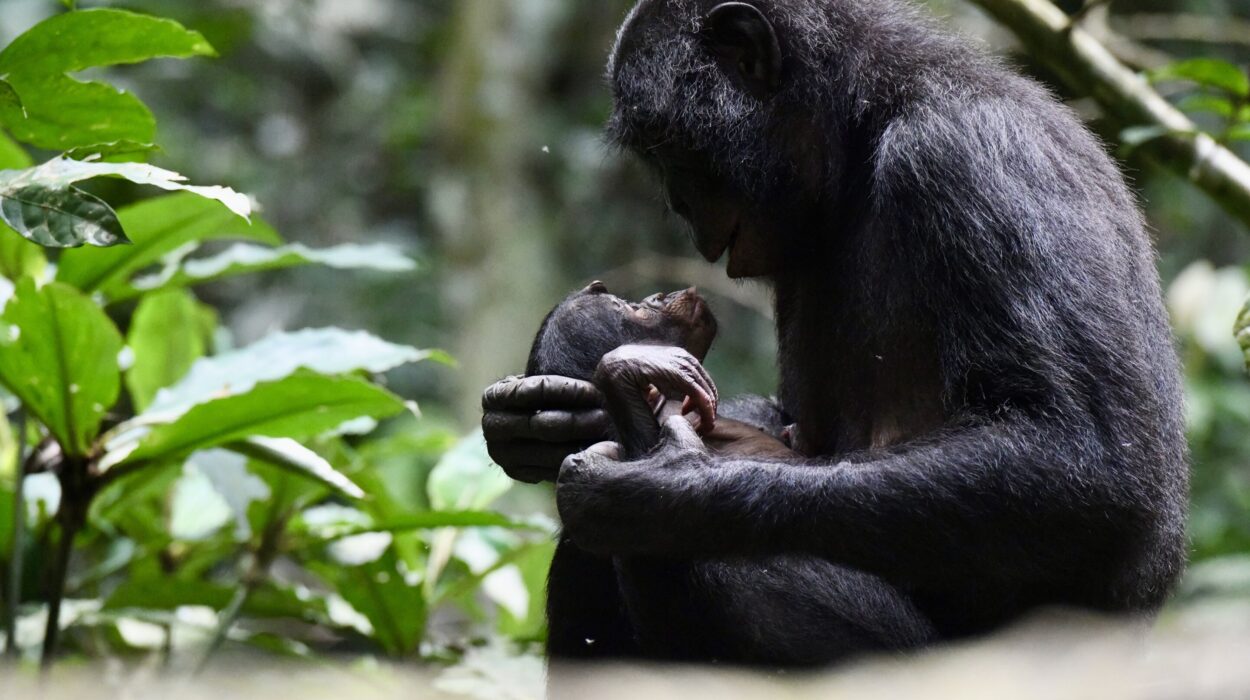In 2009, an extraordinary discovery was made in the Afar Rift of Ethiopia—a fossilized foot belonging to an ancient human ancestor. The foot, with its unique structure, became known as the “Burtele Foot.” For years, this remarkable find sat in the shadows of other famous fossils like Lucy, the renowned Australopithecus afarensis, leaving scientists curious but cautious about what it could reveal. However, as the dust settled and more discoveries came to light, a profound story began to emerge: two hominin species, once thought to be separated by time, had coexisted in the same region, walking the earth at the same time.
The recent publication of a paper titled “New Finds Shed Light on Diet and Locomotion in Australopithecus deyiremeda” in Nature has unveiled new clues, reshaping our understanding of early human ancestors. By re-examining the Burtele Foot in light of new fossil evidence, researchers have confirmed that it belongs not to Lucy’s species, but to a completely different hominin—Australopithecus deyiremeda. This discovery provides not just a deeper understanding of our evolutionary past, but an insight into how early hominins might have navigated their world, both physically and socially.
Discovering a Foot, and a Mystery
The journey to understanding the Burtele Foot has been a winding path. When it was first uncovered in 2009 by a team led by Arizona State University’s Yohannes Haile-Selassie, the fossil’s distinct features immediately set it apart from the well-known Lucy. The foot belonged to an individual that had a more primitive structure than the feet of Lucy’s species, Australopithecus afarensis, a hominin that had long been thought to represent the dominant ancestor of the time.
“At the time we found the foot, we knew it was different from Lucy’s species,” Haile-Selassie said. However, it’s not common practice to assign a new species based solely on a foot, which is a postcranial (below the neck) part of the body. The research team’s hopes were high that they would eventually find more evidence—especially from the skull or teeth—that could clearly connect the foot to a specific species.
For years, the team returned to the site, collecting more fossils, but it wasn’t until the recent publication of their findings that they could definitively connect the Burtele Foot to Australopithecus deyiremeda, a species they had already identified in 2015 but had not associated with the foot at the time. This new evidence suggests that A. deyiremeda, with its distinctive locomotion and diet, coexisted with Lucy’s species in the same ecosystem.
A Unique Way of Walking
What makes the Burtele Foot particularly intriguing is the way it challenges what we thought we knew about early human evolution. The foot reveals a species that retained some primitive features. For example, the Burtele Foot had an opposable big toe, a characteristic that would have been useful for climbing. This feature was previously thought to be a trait only found in earlier ancestors like Ardipithecus ramidus, which lived around 4.4 million years ago.
When Haile-Selassie and his team found the foot, they were stunned to realize that at 3.4 million years ago—an era dominated by more bipedal species like Lucy’s—A. deyiremeda was still hanging onto some ancestral traits. This suggests that bipedalism, or walking on two legs, did not develop in a straight line. “Bipedality came in various forms,” Haile-Selassie explained. “There was not just one way of walking on two legs until later.”

While species like A. afarensis had already adapted to walking with a straight, forward-facing big toe, A. deyiremeda still had an abducted (spread-out) big toe, making it possible that these early hominins walked with different strategies. The ability to walk on two legs while still having a big toe adapted for climbing paints a picture of an early human ancestor that was adaptable, moving between the trees and the ground in ways we don’t often think about when imagining early hominin behavior.
Eating Like the Ancients
The mystery deepens when scientists look at what these ancient species ate. To unlock clues about the diet of A. deyiremeda, Naomi Levin from the University of Michigan used a technique known as isotope analysis. She sampled the teeth of the hominins found at the Burtele site, extracting tiny bits of enamel powder to reveal the types of plants they consumed.
The results were surprising. Unlike Lucy’s species, which was known to have a mixed diet of both C3 plants (from trees and shrubs) and C4 plants (like grasses), A. deyiremeda favored resources closer to the C3 side of the spectrum. “I was surprised that the carbon isotope signal was so clear,” said Levin. “A. deyiremeda wasn’t accessing the same range of resources as A. afarensis.” This finding was significant because it shows that even among hominins living at the same time, diets could vary greatly, suggesting the species occupied different ecological niches.
A Juvenile Jaw and the Story of Growth
Among the most remarkable discoveries at the Burtele site was the jaw of a juvenile hominin, found alongside the foot fossils. The jaw, which contained both baby and developing adult teeth, provided valuable information about the growth patterns of A. deyiremeda. Gary Schwartz, a research scientist at ASU, explained that using CT scans to study the jaw allowed the team to estimate that the individual was about 4.5 years old when it died.
What surprised scientists most was how the development of the juvenile’s teeth closely mirrored patterns seen in modern apes. Despite the growing diversity among early hominins in terms of size, diet, and movement, they shared surprising similarities in their developmental biology. “These early australopiths seem to be remarkably similar in the manner in which they grew up,” Schwartz noted. This discovery sheds new light on how these ancient species developed, providing a window into the lives of our distant relatives.
Two Species, One World
The real significance of this research lies in the larger picture of how these two hominin species—A. afarensis and A. deyiremeda—coexisted in the same region. For years, scientists have wondered how multiple species could occupy the same ecological space without one outcompeting the other. The evidence gathered from the Burtele site suggests that these early human ancestors did not simply overlap by chance but lived alongside each other, each species adapting to its own set of environmental challenges.
“This discovery gives us new insights into how species lived at the same time without one pushing the other to extinction,” said Haile-Selassie. Understanding how early hominins coexisted, in terms of diet and movement, may offer clues to how we, as humans, interact with the world today. Haile-Selassie pointed out that the study of ancient ecosystems is not just about unraveling the past. “What we learn from that time could actually help us mitigate some of the worst outcomes of climate change today,” he remarked.
Why This Research Matters
The story of A. deyiremeda and A. afarensis is not just a tale of ancient bones and distant pasts. It is a story about adaptation, survival, and the complex web of life that has shaped our own existence. By studying how these species lived, moved, and ate, we gain crucial insights into how early hominins navigated their world—and how different forms of bipedalism and diet coexisted. More importantly, it reminds us that understanding our distant ancestors can provide invaluable lessons for our present and future, especially in the face of challenges like climate change. The study of the past is not just a scientific curiosity; it is a tool for understanding the world we live in today.
More information: Yohannes Haile-Selassie, New finds shed light on diet and locomotion in Australopithecus deyiremeda, Nature (2025). DOI: 10.1038/s41586-025-09714-4. www.nature.com/articles/s41586-025-09714-4
Fred Spoor, Mystery owner of African hominin foot identified, Nature (2025). DOI: 10.1038/d41586-025-03451-4 , doi.org/10.1038/d41586-025-03451-4






